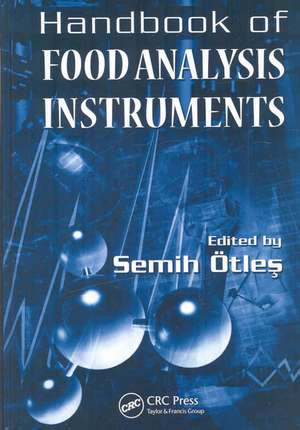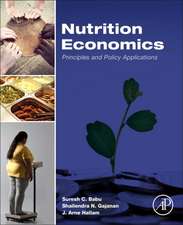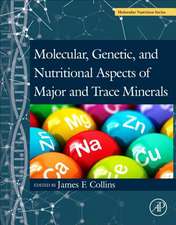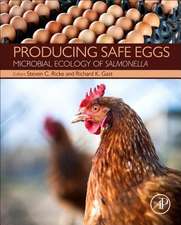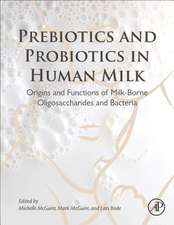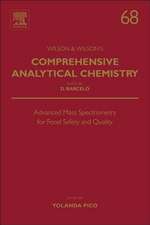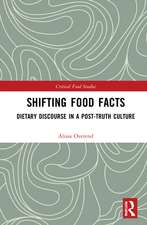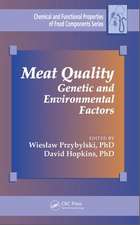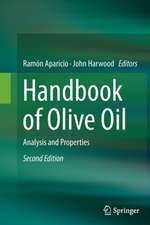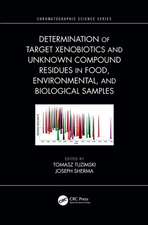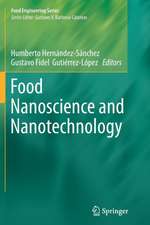Handbook of Food Analysis Instruments
Editat de Semih Otlesen Limba Engleză Hardback – 9 sep 2008
The identification, speciation, and determination of components, additives, and contaminants in raw materials and products will always be a critical task in food processing and manufacturing. With contributions from leading scientists, many of whom actually developed or refined each technique or instrument, the Handbook of Food Analysis Instruments discusses how to apply proper methods and use increasingly sophisticated instruments.
Examine Benefits, Drawbacks, and Appropriate Use
In a format that facilitates comparison of techniques, the book presents each technique in a uniform and easily accessible style. It begins with information relevant to all techniques, including calibration, standard addition, internal standards, selectivity, accuracy, precision, detection limit, quantification limit, range, robustness, speed, and convenience. Each subsequent chapter focuses on a specific type of instrument and includes a description of the information the technique can provide, a simple explanation of how it works, and examples of its application. The chapters also provide practical information such as names of instrument vendors, relative costs of instruments and materials, training and education of personnel, and references for more detailed information.
Increasingly Sophisticated Instruments Solve Analysis Problems
While there are any number of books that explain the principles of food analysis, describe how to conduct food analysis, and discuss test results, there are few that focus on understanding the actual instruments used in the analysis. Prepared by a team of food scientists, chemists, and biochemists, this handbook provides a valuable reference on the instruments of newly developed and practiced methods of analysis of food components and additives. Using the information in this book, readers can analyze each technique’s potential benefits and limitations and apply them to solve specific problems.
Preț: 1675.02 lei
Preț vechi: 2042.71 lei
-18% Nou
Puncte Express: 2513
Preț estimativ în valută:
320.55€ • 348.07$ • 269.26£
320.55€ • 348.07$ • 269.26£
Carte tipărită la comandă
Livrare economică 22 aprilie-06 mai
Preluare comenzi: 021 569.72.76
Specificații
ISBN-13: 9781420045666
ISBN-10: 1420045660
Pagini: 548
Ilustrații: 100 equations; 47 Tables, black and white; 8 Illustrations, color; 205 Illustrations, black and white
Dimensiuni: 178 x 254 x 23 mm
Greutate: 1.07 kg
Ediția:1
Editura: CRC Press
Colecția CRC Press
ISBN-10: 1420045660
Pagini: 548
Ilustrații: 100 equations; 47 Tables, black and white; 8 Illustrations, color; 205 Illustrations, black and white
Dimensiuni: 178 x 254 x 23 mm
Greutate: 1.07 kg
Ediția:1
Editura: CRC Press
Colecția CRC Press
Public țintă
ProfessionalCuprins
Data Analysis Techniques. Microextraction Methods in Food Analysis. Supercritical Fluid Extraction in Food Analysis. Microwave-Assisted Processes in Food Analysis. Ultrasound-Assisted Extraction in Food Analysis. Advances in High-Performance Liquid Chromatography and Its Application to the Analysis of Foods and Beverages. Gas Chromatography in Food Analysis. Preparative Layer Chromatography in Food Analysis. Ion Chromatography in Food Analysis. Mass Spectrometry and Hyphenated Instruments in Food Analysis. Instruments to Analyze Food Colors. High-Resolution Near-Infrared and Nuclear Magnetic Resonance Analysis of Food and Grain Composition. Nuclear Magnetic Resonance Spectroscopy in Food Analysis. Atomic Absorption, Atomic Emission, and Inductively Coupled Plasma Spectroscopies in Food Analysis. Autofluorescence Spectroscopy in Food Analysis. Electronic Nose Technology in Food Analysis. Electroanalytical Techniques and Instrumentation in Food Analysis. Capillary Electrophoresis in Food Analysis. Gel Electrophoresis in Food Analysis. Multiplexed Immunoassays in Food Analysis. Rheological Instruments in Food Analysis. Scanning Electron and Transmission Electron Microscopies in Food Analysis. Index.
Recenzii
"With contributions from leading scientists, many of whom actually developed or refined each technique or instrument, the Handbook of Food Analysis Instruments discusses how to apply proper methods and use increasingly sophisticated instruments."
— Translation, January 2009
— Translation, January 2009
Descriere
Analyzing the presence and interactions of various compounds in foods during storage and processing and their impact on all aspects of quality, this handbook details the application of appropriate methods of food analysis and the use of increasingly sophisticated instruments. Each chapter presents a specific type of instrument, focusing on the origin, concept, and use of these novel tools as well as their operating principles, definitions, theoretical basis, and applications in practical food analysis. Topics include nuclear magnetic resonance spectroscopy, microwave-assisted process, and more.
